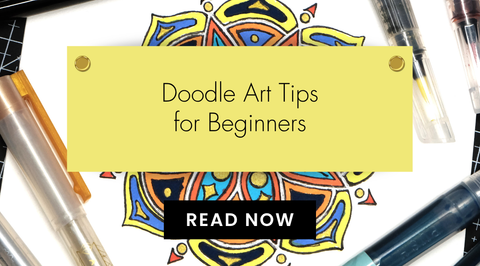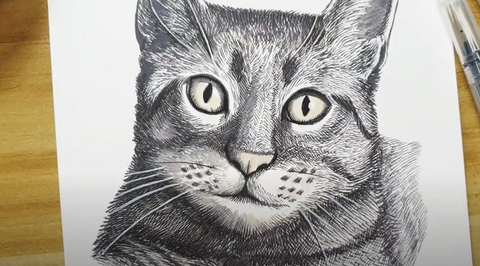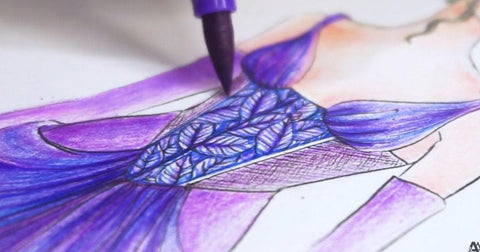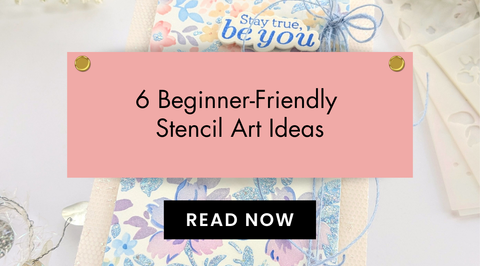Beginner's Guide: Easy Watercolor Exercises to Build Confidence and Improve Techniques
Last Updated: July 29, 2024
Watercolor painting can be an intimidating medium for beginners, but with the right guidance and practice, it can also be incredibly rewarding. One of the biggest hurdles for beginners is building confidence in their technique and mastering the fundamental skills required for successful watercolor painting.

In this beginner's guide, we will explore a series of easy watercolor exercises designed to help you build confidence and improve your technique.

The Importance of Consistent Practice and Technique Development
Like any form of art, watercolor painting requires consistent practice and technique development. By dedicating time to regular practice and focusing on specific exercises, beginners can gradually build their skills and confidence. This guide will provide a structured approach to watercolor painting, offering exercises that focus on fundamental techniques such as wet-on-wet and wet-on-dry, color mixing, and brushwork.
Watercolor Painting Fundamentals
 Artistry by Altenew's Artists' Watercolor Pan Set
Artistry by Altenew's Artists' Watercolor Pan Set
Understanding the Wet-on-Wet Technique
The wet-on-wet technique involves applying wet paint to a wet surface, allowing the colors to blend and create soft, diffused edges. This technique is perfect for creating smooth gradient washes, which are essential for many watercolor paintings. To practice this technique, start by wetting your paper evenly with clean water. Then, apply a wash of watercolor to the wet surface, allowing the paint to flow and blend naturally.
Experiment with Puddle Painting
Puddle painting is a fun and experimental technique that involves allowing puddles of paint to flow and merge on the paper. This technique can create organic shapes and textures that can be used as a base for more detailed elements in a painting. To practice puddle painting, apply generous amounts of wet paint to your paper and tilt it to encourage the colors to flow and blend.

Exploring the Wet-on-Dry Technique
In contrast to wet-on-wet, the wet-on-dry technique involves applying wet paint to a dry surface. This technique allows for more control and precision, making it ideal for detailed brushwork and layering colors.

Layering Colors for Depth and Texture
Layering colors is a key aspect of the wet-on-dry technique. By applying multiple layers of transparent color, artists can create depth and texture in their paintings. Practice layering colors by starting with a light wash as a base and gradually building up layers of color to achieve depth and richness.

Practicing Detailed Brushwork
Detailed brushwork is essential for adding fine details and textures to a watercolor painting. Experiment with different brushstrokes and techniques to create a variety of textures and patterns. Practice controlled paint application by varying the pressure and angle of your brush to achieve different effects.
Confidence-Building Watercolor Exercises

Exercise 1: Gradient Wash Practice
To practice creating smooth gradient washes, start by wetting your paper evenly with clean water. Then, load your brush with a generous amount of paint and apply it to the wet surface. Use horizontal brushstrokes to create a smooth transition from dark to light or vice versa. Experiment with different color combinations and practice achieving seamless transitions between colors.
Exercise 2: Puddle Painting Exploration
For this exercise, allow yourself to let go of control and let the paint flow and blend naturally on the paper. Apply generous amounts of wet paint in various colors and tilt the paper to encourage the colors to merge and create interesting shapes and textures. Use this exercise as an opportunity to embrace spontaneity and explore the unpredictable nature of watercolor.

Exercise 3: Layered Color Studies
Building up colors in layers is an essential skill for creating depth and richness in watercolor paintings. Practice layering colors by starting with a light wash as a base and gradually adding layers of transparent color. Experiment with different color combinations and pay attention to how each layer interacts with the ones beneath it.

Exercise 4: Detailed Brushwork Practice
Mastering different brushstrokes is crucial for adding fine details and textures to your paintings. Practice various brushstrokes such as dry brushing, stippling, and hatching to create a range of textures and patterns. Focus on controlling the pressure and angle of your brush to achieve precise and controlled paint application.
Mastering Color Mixing and Blending

Creating Color Swatches for Reference
To improve your understanding of color mixing, create a set of color swatches using your watercolor paints. Mix primary colors together to create secondary colors and create swatches that demonstrate the range of tones you can achieve with each color. Use these swatches as a reference when planning your paintings and experimenting with different color combinations.
Grab Artistry by Altenew’s FREE Color Swatches HERE.

Experimenting with Complementary Colors
Complementary colors are pairs of colors that are opposite each other on the color wheel, such as red and green or blue and orange. Experiment with mixing complementary colors to create vibrant contrasts in your paintings. By understanding how complementary colors interact with each other, you can add visual interest and depth to your work.
Building a Consistent Practice Routine
Set aside dedicated time for practicing watercolor painting on a regular basis. Whether it's a few hours each week or a daily practice session, establishing a consistent routine will help you make steady progress in developing your skills.

Embracing Mistakes as Learning Opportunities
Mistakes are an inevitable part of the learning process, especially when it comes to watercolor painting. Instead of becoming discouraged by mistakes, embrace them as valuable learning opportunities. Analyze what went wrong, make adjustments, and use each mistake as a stepping stone toward improvement. Read more on Embracing and Learning from Common Watercolor Blunders.

Tracking Progress and Celebrating Small Wins
Keep track of your progress by documenting your paintings and exercises. Take note of areas where you've improved and celebrate small victories along the way. By acknowledging your progress, you'll stay motivated and inspired to continue honing your skills.
In this beginner's guide, we've explored a series of easy watercolor exercises designed to help you build confidence and improve your technique. From mastering wet-on-wet and wet-on-dry techniques to practicing color mixing and developing a consistent practice routine, these exercises provide a solid foundation for beginners to build upon.

Keep Practicing and Enjoying the Journey
Building confidence in watercolor painting takes time, patience, and dedication. Embrace the journey of learning and enjoy the process of experimenting with different techniques and discovering your own artistic style. Remember that every brushstroke is an opportunity for growth, so keep practicing and exploring the endless possibilities of watercolor painting. Read up on How to Overcome Fear of the Blank Page (Tips for New Watercolor Artists).

Build Your Confidence with These Simple Beginner Watercolor Tips
Now that you've learned about these fundamental watercolor exercises, it's time to put them into practice. Gather your watercolor supplies, set aside some dedicated painting time, and start applying what you've learned. Whether you're working on exercises or creating your own original paintings, remember that every stroke brings you one step closer to becoming a more confident and skilled watercolor artist.

Building confidence in watercolor painting is achievable through consistent practice, experimentation, and a willingness to learn from both successes and mistakes. By incorporating these easy exercises into your practice routine, you'll gradually improve your technique and develop the skills needed to create beautiful watercolor paintings.
Find more watercolor tips and tricks for beginners in The Creative Corner. See you there!






